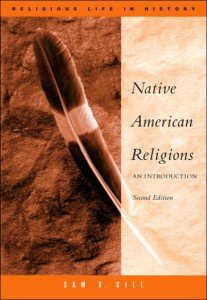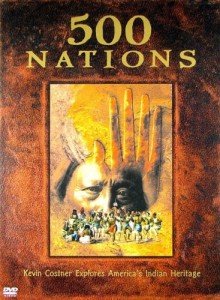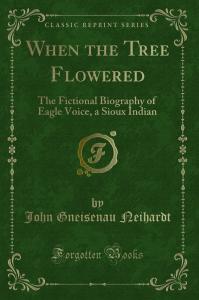Book Review:
Ohitika Woman
A Journey of Resilience, Identity, and Courage
by Mary Brave Bird and Richard Erdoes
Ohitika Woman, the sequel to Mary Brave Bird's earlier memoir, Lakota Woman, stands as a raw, unflinching testament to the resilience of a Native woman navigating the intersections of cultural identity, personal trauma, and systemic oppression. Co-written with Richard Erdoes, the book is a deeply personal narrative that captures Mary Brave Bird's experiences as a Lakota woman, a mother, and a survivor. The term "Ohitika," meaning "brave" in Lakota, aptly encapsulates the spirit of the memoir and Mary herself—a woman determined to live life on her own terms despite the myriad challenges she faces.
A Continuation of the Lakota Woman's Journey
While Lakota Woman chronicled Mary's involvement in the American Indian Movement (AIM) and highlighted her activism, Ohitika Woman shifts focus to her personal struggles and triumphs in the years following those turbulent times. Mary has reverted to her maiden name of Brave Bird from Crow Dog after her divorce from Learnard. The book begins where its predecessor left off, delving into Mary's life as she transitions from her impassioned activism to the quieter, though no less demanding, roles of motherhood and community member. This shift in focus enables the reader to see a more comprehensive and nuanced picture of Mary's life, both as a public and private figure.
The book does not shy away from portraying the brutal realities of Mary's life: her tumultuous relationships, battles with alcoholism, poverty, and the enduring pain of cultural displacement. These struggles are shared with an honesty that is both disarming and heartrending. Yet, despite the adversities, the story is imbued with an undeniable sense of hope and resilience. Mary's journey is not just about survival; it is about reclaiming her identity and healing the wounds inflicted by both personal betrayals and historical injustices.
The Power of Voice and Authenticity
What makes Ohitika Woman compelling is the voice of Mary Brave Bird herself. Her narrative is raw and unapologetic, filled with a blend of sorrow, anger, humor, and determination. Mary's voice exudes authenticity, pulling the reader into her world and making her experiences visceral and immediate. The candor with which she discusses complex topics—domestic violence, the impact of colonization on Native communities, and the struggles of single motherhood—is both courageous and essential. Through her words, Mary carved out a space for stories that are often marginalized or erased.
Her co-author, Richard Erdoes, plays an essential but complementary role, helping to structure and weave together Mary's memories and reflections without diluting her voice. Erdoes, a longtime advocate for Native rights and culture, serves as a respectful collaborator, ensuring that Mary's story remains at the forefront.
Thematic Depth
One of the book's most striking aspects is its exploration of identity. For Mary, being a Lakota woman in a society that has long oppressed and marginalized Native peoples is a source of both pain and pride. She grapples with the weight of cultural expectations and stereotypes while simultaneously working to preserve and celebrate her heritage. This duality is evident throughout the book as Mary navigates her roles as a mother, activist, and storyteller.
Another significant theme is resilience. Mary's life is marked by profound struggles, from abusive relationships to systemic racism, yet she continually rises above these challenges. Her ability to confront and overcome her hardships is a testament to her strength and the enduring spirit of her people. The title Ohitika Woman not only reflects Mary's bravery but also serves as a broader commentary on the resilience of Indigenous women.
The book also delves into the impact of historical trauma on Native communities. Mary's story is not just her own; it is intertwined with the collective experiences of her people. The shadow of colonization, forced assimilation, and cultural erasure looms large, shaping the lives of individuals and communities alike. Yet, Mary's narrative also highlights the power of cultural preservation and the importance of passing down traditions and stories to future generations.
Strengths and Limitations
Ohitika Woman succeeds in presenting a vivid and emotionally resonant account of Mary Brave Bird's life. Its greatest strength lies in its authenticity and the unfiltered honesty of Mary's voice. The memoir provides a deeply human perspective on issues that are often reduced to statistics or abstract concepts, such as poverty, addiction, and cultural loss.
However, the book's rawness can also be challenging for readers. The unflinching portrayal of Mary's struggles may be difficult to process, particularly for those unfamiliar with the historical and ongoing injustices faced by Native communities. Additionally, the memoir's structure, which is more episodic than linear, may feel disjointed at times. While this format reflects the fragmented nature of memory, it can occasionally make the narrative harder to follow.
Legacy and Impact
Ohitika Woman is more than a memoir; it is a call to action. Mary's story sheds light on the resilience of Native women and the enduring struggles of Indigenous communities. It serves as a reminder of the importance of storytelling as a means of resistance and cultural preservation. Through her words, Mary Brave Bird honors her ancestors, inspires her contemporaries, and offers hope to future generations.
The book's impact extends beyond its literary merits. It challenges readers to confront their own assumptions and biases about Native peoples and to consider the broader social, political, and historical contexts that shape Mary's experiences. In doing so, it fosters empathy and understanding, bridging the gap between disparate worlds.
Conclusion
Ohitika Woman is a powerful and poignant memoir that captures the complexities of Mary Brave Bird's life and the resilience of her spirit. It is a story of survival, identity, and courage, told with unflinching honesty and profound humanity. While the book is rooted in Mary's personal experiences, its themes are universal, resonating with anyone who has faced adversity or sought to reclaim their voice.
For those who have read Lakota Woman, this sequel provides a deeper understanding of Mary's journey and the challenges she faced after her time with AIM. For new readers, Ohitika Woman stands on its own as an essential work that illuminates the lived realities of Native women and the enduring strength of their communities. It is a book that demands to be read, remembered, and shared—a testament to the power of storytelling and the indomitable spirit of an Ohitika Woman.






